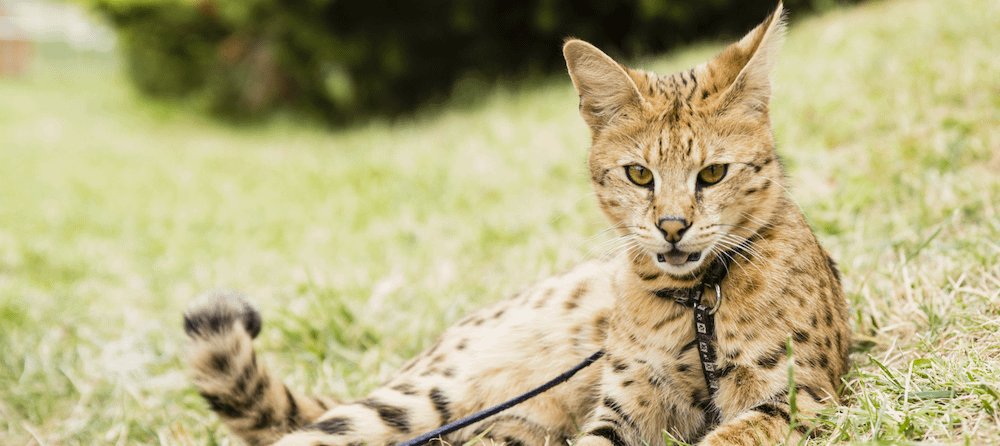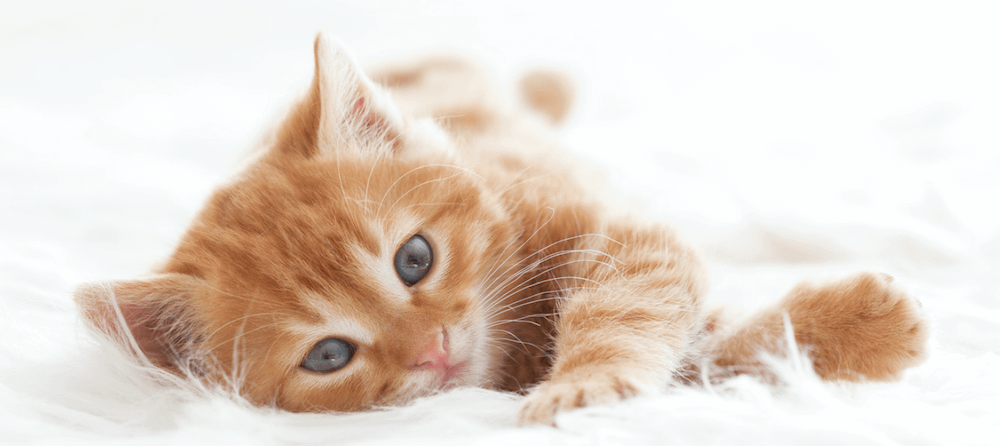Owning a domesticated Savannah cat may just be the closest thing to having a pet wildcat. But not all Savannah cats are created equal, in terms of their wild lineage. Learn more about “filial” ratings in Savannah cats, whether an “F1” Savannah cat is considered dangerous, as well as other wild facts about these exotic cats.
Savannah cats are bred from African servals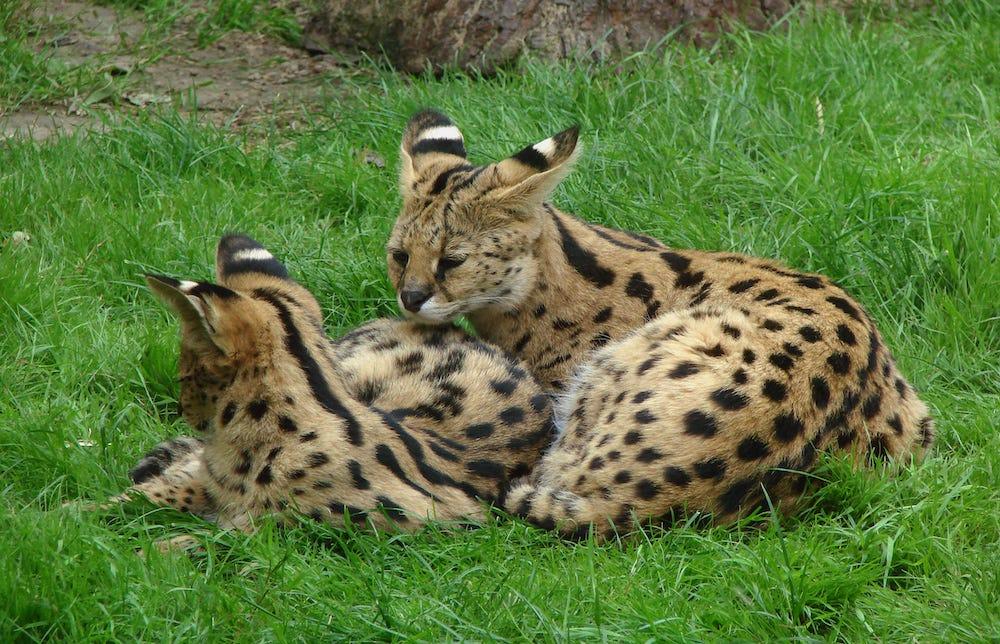
The Savannah cat was developed in the U.S. in 1986 after breeders crossed a female Siamese domestic cat with a male African serval.
African servals are mainly solitary wildcats. They are widespread in Sub-Saharan countries, weighing between 20 and 40 pounds, with a carnivorous diet that mostly consists of rodents, small birds, frogs, insects, and reptiles. According to Wildcats of the World (University of Chicago Press), servals are able to purr, chirp, hiss, cackle, growl, grunt, and meow.
Other spotted cat breeds that contributed to today’s Savannah cat include the Bengal, Egyptian Mau, Oriental Shorthair, and domestic shorthair tabbies.
What is a Savannah Cat? Breed features
Savannah cats typically have a spotted coat in brown, tan, or gold; silver; and black or black-smoke colors. Other “diluted” coat colors and patterns found in the Savannah include rosetted, marble, point, blue, cinnamon, chocolate, and lilac (lavender).
Serval characteristics most commonly found in Savannah cats include:
- Color markings, including black or dark “tear-streak” or “cheetah tear” markings that run from the corner of the eyes down the sides of the nose to the whiskers
- Tall, wide, rounded, erect ears that feature ocelli on the backs
- Very long legs, with a hind end that is often higher than their shoulders while standing
- Small heads that are taller than wide; long slender necks; and fat, puffy noses
- Hooded eyes that are green, brown, gold, or a blended shade
- Short tails that feature black rings and a solid black tip
Savannah cat vs Bengal cat
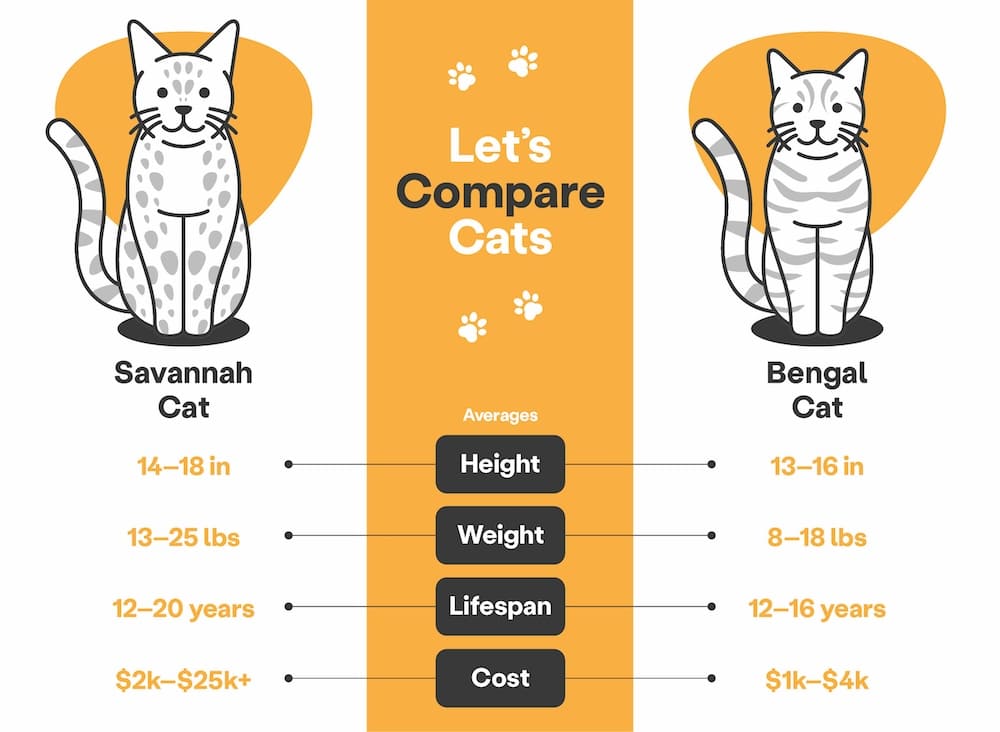
Savannah cats and Bengal cats are both popular hybrid cat breeds known for their distinctive appearances and playful personalities. However, they differ in several aspects.
The Savannah cat, a crossbreed of a domestic cat and the serval (African wild cat), emerged in the 1980s, showcasing a larger size, spotted coat, and wild-inspired patterns. In contrast, Bengal cats, developed in the 1960s-1970s through the hybridization of a domestic cat and an Asian leopard cat, exhibit medium to large sizes with spotted or marbled coats reminiscent of wild leopards.
While both breeds share energetic, playful, and intelligent temperaments, Savannah cats may demand more attention and stimulation due to their higher energy levels and curiosity.
Additionally, ownership of Savannah cats might be subject to restrictions in some jurisdictions due to their wild ancestry, making it essential to research local regulations. On the other hand, Bengal cats are generally legal as pets without specific restrictions, making them a more accessible choice for potential cat owners.
Are Savannah cats dangerous?
If these cats are 50% wild, does that mean they’re potentially dangerous? F1 Savannah cats are not considered dangerous to humans. However, as they retain strong hunting instincts, they may pose a danger to smaller pets in the household, such as rodents, birds, and fish. (But really—any domestic cat could pose a threat to these species!)
F1 Savannah cats are illegal in 10+ states
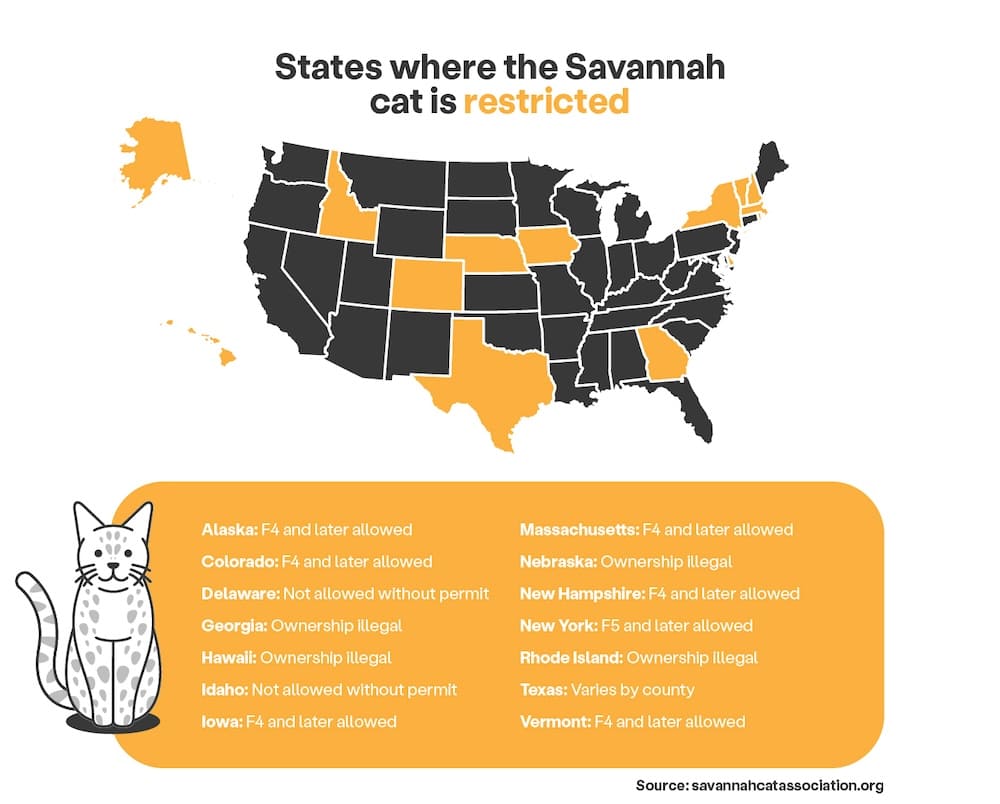
While F1 Savannah cats aren’t considered dangerous to humans, some U.S. states have outlawed owning one. The following states don’t allow these cats, or require permits:
- Alaska: F4 and later allowed
- Colorado: F4 and later allowed
- Delaware: Not allowed without permit
- Georgia: Ownership illegal
- Hawaii: Ownership illegal
- Idaho: Not allowed without permit
- Iowa: F4 and later allowed
- Massachusetts: F4 and later allowed
- Nebraska: Ownership illegal
- New Hampshire: F4 and later allowed
- New York: F5 and later allowed
- Rhode Island: Ownership illegal
- Texas: Varies by county
- Vermont: F4 and later allowed
How big does a Savanah cat get?
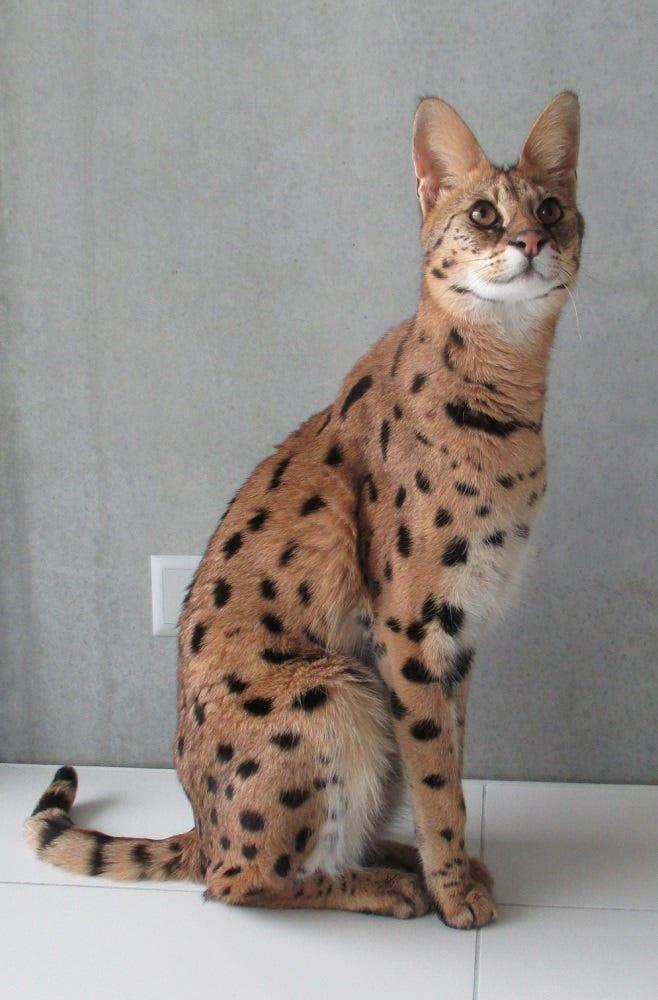
One of the very common questions around this cat breed is "How big is a Savannah cat?". Their size can vary depending on the generation of Savannah cat, as they are classified into different generations (F1 to F7 and beyond) based on how many generations they are removed from their wild ancestor, the serval.
F1 Savannah cats are the tallest (and one of the largest) cat breeds. As such, Savannah cats may weigh around 25 pounds. According to the Guinness Book of World Records, Savannah cats have held the title of tallest domestic cat in recent years—one measured 19.05 inches tall! Considering African servals stand 21–24 inches tall, it’s impressive that the domestic cat very nearly “measures up” to its wild parent.
Savannah cat size vs a normal cat
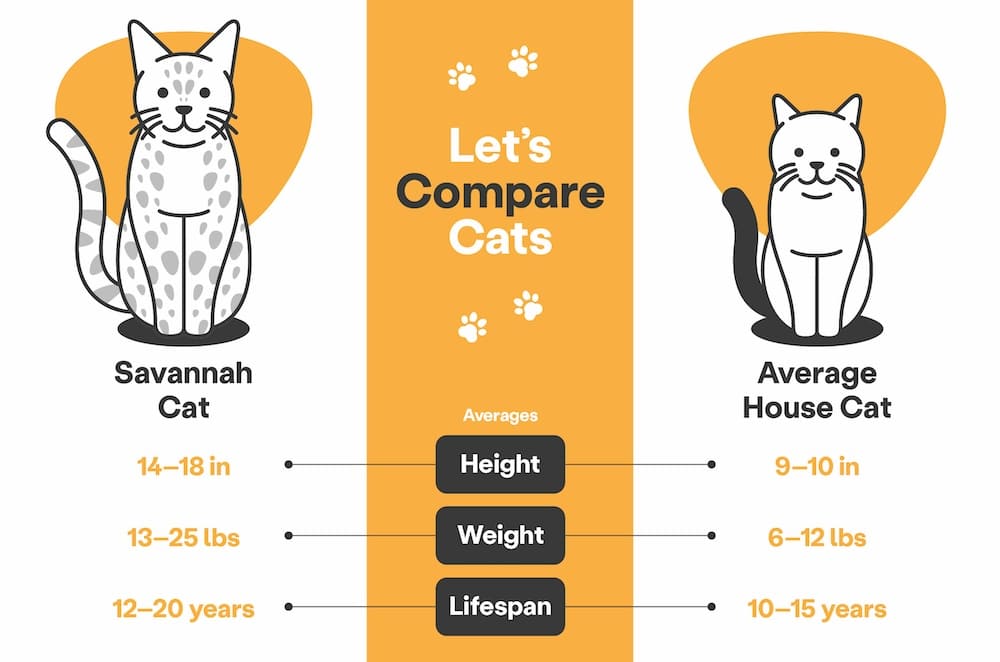
Savannah cats, known for their distinctive appearance and playful nature, are notably larger than typical cats. From the first-generation (F1) with a size akin to small dogs to later generations (F2 to F7) that resemble larger domestic cats, these feline companions stand out in size and charm. Check out our infographic for a quick visual guide to understand how the size of Savannah cats compares to standard cats.
Fun facts about Savannah cats
F1 Savannah cats are 50% “wild”
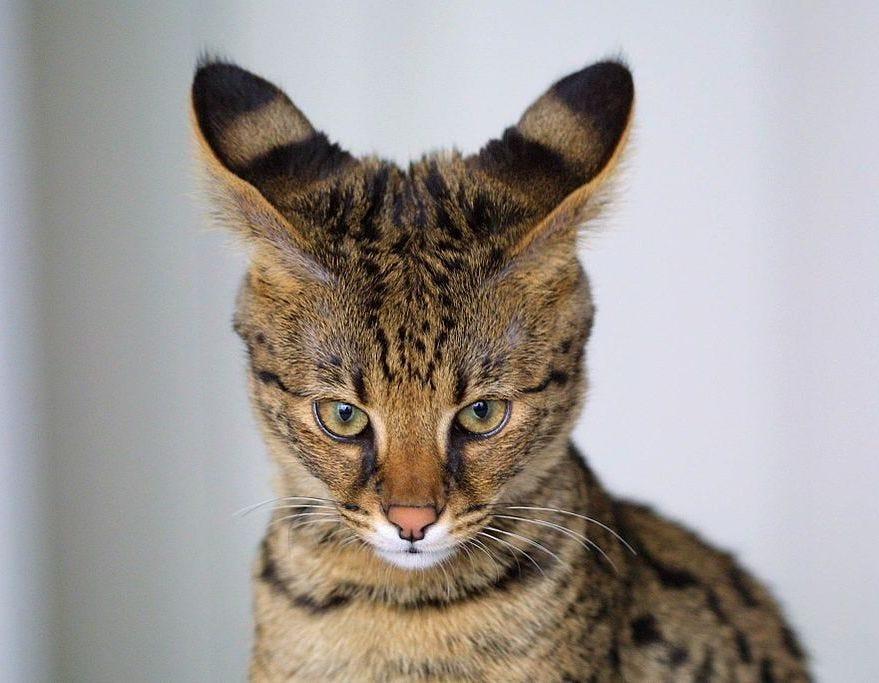
“F” stands for the Savannah cat’s “filial” rating—specifically, how many generations removed from the African serval that particular cat is. In the case of an F1 Savannah cat, the highest number, you’re looking at a first generation domestic Savannah.
The F1 Savannah cat is considered 50% wild. As the filial number increases (F2, F3), the measure of wild blood (serval DNA) decreases.
Because there is a significant difference in gestation periods between the African serval (75 days) and a domestic cat (65 days), F1 Savannah cats are considered very difficult to produce. There are also incompatibilities between each species’ sex chromosomes.
Savannah cats have incredible jumping abilities
The Savannah cat’s height lends itself to their amazing jumping abilities, which reach up to 8 feet in the air! Savannah cats are known to frequent high places, jumping on top of cabinets, doors, refrigerators, and just about anything else they can seek out.
They’re also one of the longest-living cat breeds
With a Savannah cat, you’ll have a friend for a very long time: This breed is slow to mature, sometimes living for 20 years or more.
Savannah cat diet
All cats require a diet high in animal protein—especially because cats can’t synthesize the essential amino acid taurine. Without enough taurine in their diet, cats are likely to develop a heart condition known as dilated cardiomyopathy, experience vision problems, contract UTIs, and have other health issues. Savannah cats are no different; and in fact, most breeders agree that Savannahs have a need for more taurine than the average domestic cat. Taurine supplements are recommended for adding to any type of food.
How much is a Savannah cat? Savannah cat price
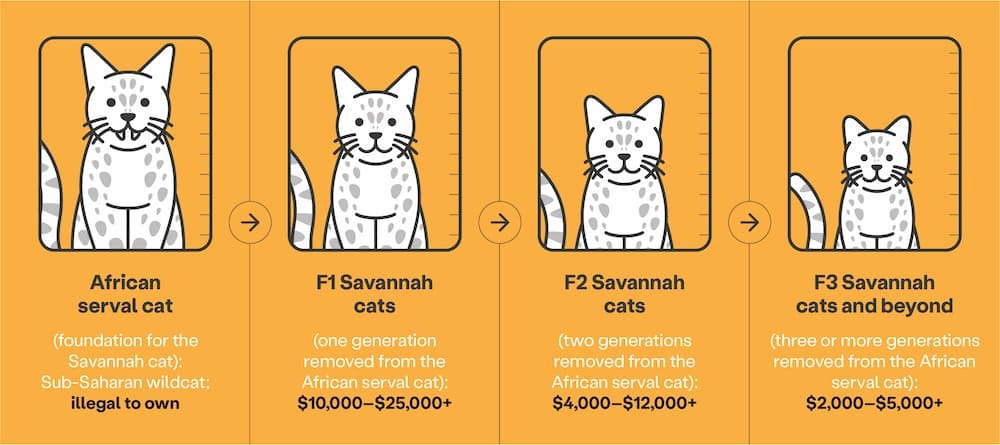
This domesticated wildcat comes at a price: Depending on filial rating (F1, F2, or F3), Savannah cats typically sell for between $1,000 and $20,000. As the most exotic generation, F1 Savannah cats make up the majority of that higher price threshold. This is likely related to the difficulty in producing F1 Savannah cats, as mentioned earlier.
Here are rough estimates for the cost of Savannah cats:
F1 Savannah Cats (first-generation)
Prices can range from $10,000 to $25,000 or even more. F1s are more expensive due to the inclusion of a serval parent.
F2 Savannah Cats (second-generation)
Prices may range from $4,000 to $12,000. F2s are typically smaller and more affordable than F1s.
F3 Savannah Cats (third-generation) and beyond
Costs can vary from $2,000 to $5,000 or more. As you go down the generations, the prices generally decrease, but they can still be higher than those of many other domestic cat breeds.
Savannah cat personality - a highly intelligent and energetic breed
You must be able to devote a lot of time to a Savannah cat: They are highly energetic cats that require a lot of exercise, play, and interaction. They are exceedingly clever, sometimes said to “play tricks” on their humans.
In fact, Savannah cats may be too clever for their own good: They can learn how to open doors and cupboards, among other troublemaking situations.
Just like other cat breeds, early exposure to people and other pets is paramount in raising a friendly Savannah cat. Savannah kittens should be cuddled and played with frequently. However, when you’re bringing home a new Savannah cat, be sure to introduce them slowly to other pets in the house like cats and dogs. (It’s best not to introduce them to small pets like rodents and birds —potentially seen as prey—at all!)
A Savannah cat’s size and energy level may intimidate even the most relaxed cat or dog in the house. Keep your Savannah quarantined from other pets and slowly begin to swap scents. After a few weeks (not days!), allow your pets supervised interactions. Don’t leave your pets alone together until you’ve supervised them over a lengthy period of time.
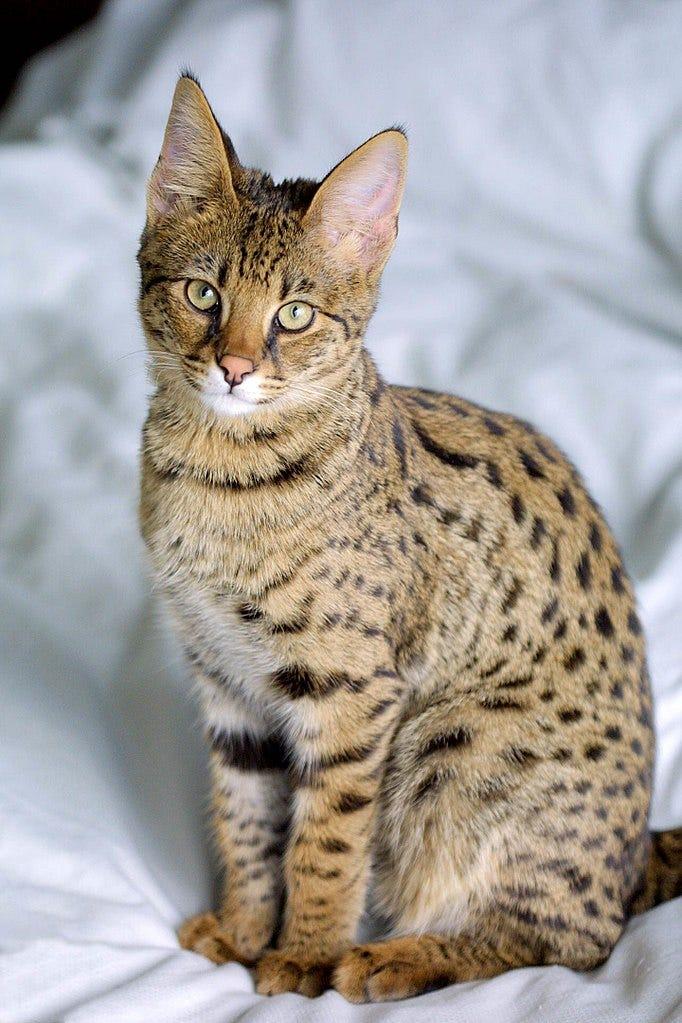
These cats act more like dogs!
Savannah cats are known for being dog-like in their loyalty, often following their humans around the house. They also take well to walking with a leash in the great outdoors. Before going for a walk with your Savannah, just make sure you outfit them with a breakaway collar with identification tags, and that they are microchipped.
They enjoy water
Perhaps because their parent breed, the serval, prefers areas close to water bodies such as wetland and savanna, Savannah cats enjoy water! You might find them hopping in the shower with you, or even taking a swim in a small body of water outside. On the flip side, you may notice with frustration that your Savannah cat likes to bat their water bowls until they’re empty. In this case, a cat water fountain may be the best way to make sure your kitty stays hydrated!
Which of these facts most surprised you about F1 Savannah cats?
Are Savannah cats good house pets?

Savannah cats are clever, highly energetic cats that require a lot of exercise, play, and interaction. They have strong hunting instincts, so exercise caution if you have other small pets in the house such as rodents, birds, and fish.
They are however considered high-maintenance pets as they require a lot of exercise and attention. Plus, with such a large breed, you can expect having to scoop twice the amount of poop in the litter box.
